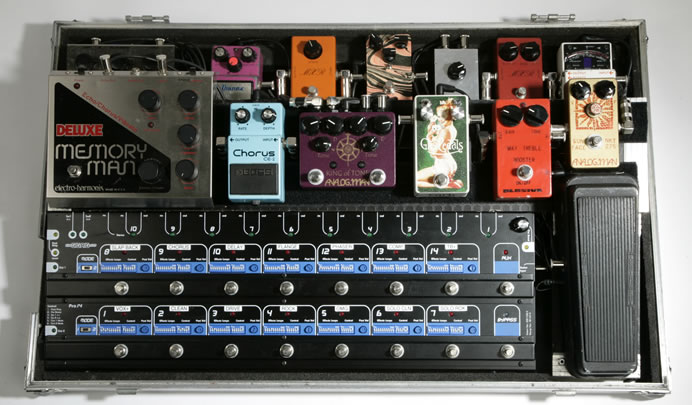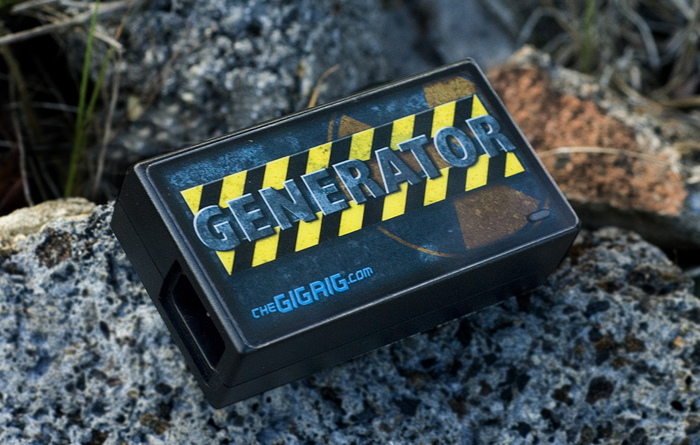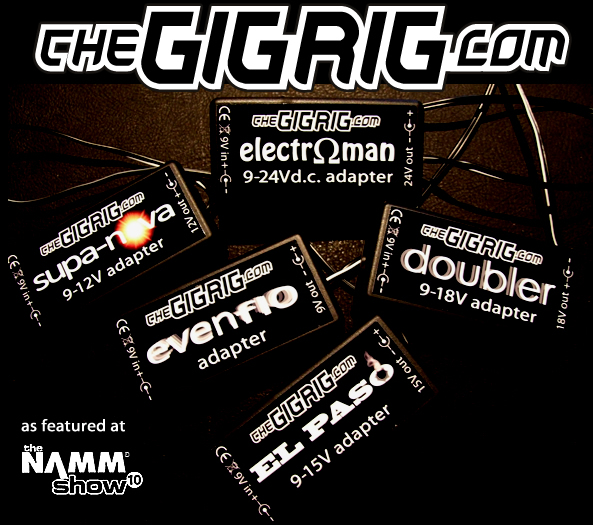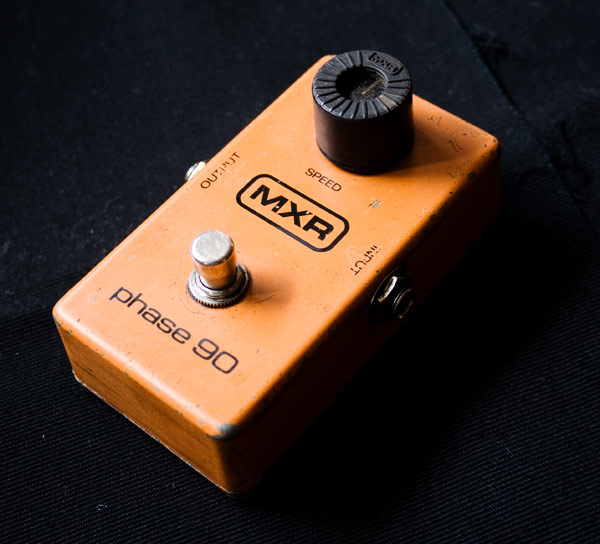In Part 1 of this series of posts dedicated to modulation effects, I presented the Phaser. In Part 2, I will focus on an effect that has been around since the 60s: the Flanger also known as Flanging. We will see how it can be useful to us guitarists and in what style it is more prominently used. As always, I have prepared a few videos to demonstrate the Flanging effect, for which I have concocted some cool settings on my trusty Boss BF-2.
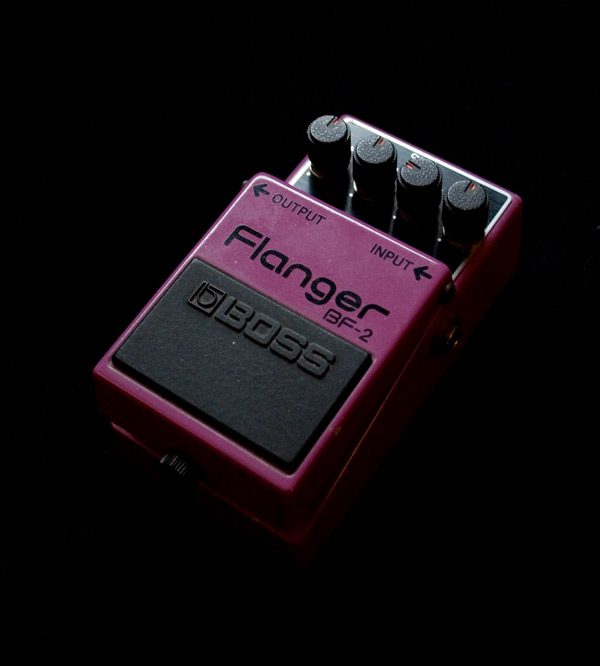
How Flanger pedals came to be
The Flanging effect originated in studios in the sixties. It was generated by recording then playing back one piece simultaneously on two tape recorders. The result of the two tape recorder playback was recorded on a third tape recorder. Because the two tape recorders reading the piece were slightly out of sync, it created a phasing like sound. This could be emphasized by pressing on the “flange” or rim of one of the tape reel to slow down the playback. The delay between the two tape recorders would then be more pronounced and create a “jet plane” effect that came to be known as “flanging”. It was used at first to enhance whole mixes, the end of “Bold as Love” by Jimi Hendrix is the first example of stereo flanging in history.
Progress in electronics allowed engineers to recreate this effect without having to use bulky tape recorders and make units that could fit in a pedal. The trick used by Flanger pedals is to use a very short delay and some oscillator to slightly vary the delay time. Analog models use bucket brigade components, see my posts about delays for more information. Actually, if you set a delay pedal with a very short delay time, say 1 ms, you will start to get a hint of flanger effect but not as pronounced since there is no oscillation.
Settings
Most Flanging pedals have at least a Depth and a Rate or Speed knob. Depth sets the intensity of the effect whereas Rate sets the speed of the oscillation. The Boss BF-2 that I use in the videos below is more complex and has no less than four controls: Depth, Rate, Manual and Res. Res is a resonance setting which can be labeled as “regen” or “feedback” on other models. It controls how much of the processed signal is re-injected into the effect to get a more intense result. The Manual setting is specific to the BF-2 and apparently affects the amount of delay but I have no proof of that.
A generic word of advice for pedals which offer 4 or more settings since it can be overwhelming at first : try putting everything half way first, then adjust from there.
Clean tone and Flanger
Flanger pedals really became mainstream in the late 70s and were primarily used by rock guitarists. Before I show you how it sounds with a distortion, let’s see how it sounds with a clean tone.
If you are as old as I am, it should propell you right back to the early 80s and “new wave” bands such as The Cure or pop bands such as The Police. Flanging (and also Chorus) gave an ethereal quality to arpeggios and chords which suited their music perfectly. Both slow and fast rates are interesting in that respect as I demonstrate here . Note that it also suits funk rhythm licks:
Gear used for the video: Fender American Classics Custom Shop Stratocaster with Kinman AVn Blues pickups, 1974 Fender Champ Amplifier (Volume at 2, Bass at 10, Treble at 2.5).
A while back, I wrote a piece describing the tone of Robert Smith, The Cure’s guitarist and created this little rendition of “A Forest”, using a Boss BF-2 Flanger and a Boss DD-3 Digital delay:
Distortion and Flanger: Before or After the Distortion?
As I wrote in my Phaser post, Eddie Van Halen used a phaser a lot but little is known that he also used a flanger to create some of his best tones. “Unchained” is probably his most recognizable Flanger tone. Queen’s Guitarist Brian May is also a big flanger fan, listen to “Keep Yourself Alive” for a fine example of tape flanging.
The Flanger effect is usually placed after overdrives and distortions in the chain but it can also be interesting to place it before, which is something that Prince does for instance. I will show you in coming videos the difference between the two placements.
First, here is how it sounds placed after the distortion. I show another three example settings using my BF-2. A bit of warning here, the BF-2 is a quite strong effect which also tends to boost the volume especially when the Depth knob is set past 12. Flangers, much like phasers, tend to create “volume” spikes by nature. The first setting is an example of how a low “Rate” (or speed of modulation) fattens the tone. Using higher speeds tend to create a wobblier effect that I think is not as fattening but almost resembles the sound of an organ:
Gear used for the video: Fender American Classics Custom Shop Stratocaster with Kinman AVn Blues pickups, 1974 Fender Champ Amplifier (Volume at 2, Bass at 10, Treble at 2.5), Analogman modded Boss DS1 Distortion (Dist at Max, Tone at 8 o’clock and Level at 10 o’clock).
And here is how it sounds placed before the distortion, the effect is less pronounced but a bit crazier at the same time. I think it is interesting to get an “out of control” tone:
Gear used for the video: Fender American Classics Custom Shop Stratocaster with Kinman AVn Blues pickups, 1974 Fender Champ Amplifier (Volume at 2, Bass at 10, Treble at 2.5), Analogman modded Boss DS1 Distortion (Dist at Max, Tone at 8 o’clock and Level at 10 o’clock).
Which model to choose?
There are a lot of Flanger pedals to choose from on the market, here is a short selection:
- The MXR Flanger is one of the oldest flanger pedal designs around and has been reissued recently. Since Van Halen used it quite a bit, MXR has released an EVH model.
- The MXR Micro Flanger was recently re-issued and packs a lot of good flanged tones in a tiny package.
- The Electro Harmonix Deluxe Electric Mistress has been used by David Gilmour but also by Andy Summers. Rumour has it that what everyone thinks is a chorus in some of The Police’s clean tones is actually an Electric Mistress flanger.
- The Boss BF-2 which I have demonstrated in this post is sadly discontinued but it is relatively easy to find on the second hand market as it was in production for 20 years (between 1980 and 2001). It is quite versatile and is especially great for early 80s new wave clean tones à la The Cure.
- The Boss BF-3 has replaced the BF-2 in the Boss range. Although it is not clearly stated on the Boss website, I am pretty sure it is a digital pedal which gives it two rare particularities: it is stereo and there is a “tap tempo” feature to set the speed of the oscillation just by tapping a footswitch.
- The Ibanez FL-9 is another classic 80s design which has been reissued. It gives a warm but high quality flanging tone and has its own personality. I personally own one and I will probably do a BF-2 versus FL-9 post. You can also spot it at around 4:35 in this video presenting the gear Joe Satriani has used on the Chicken Foot tour. Maxon, the manufacturer which used to make the Ibanez pedals in the 80s, has also an FL-9 reissue in its range. I could not tell you which one is better and/or more authentic.
- Flanger is not huge on the “boutique” market but there are a few models, check out the Strymon Orbit or the T Rex Twister and Tonebug Chorus Flanger.

